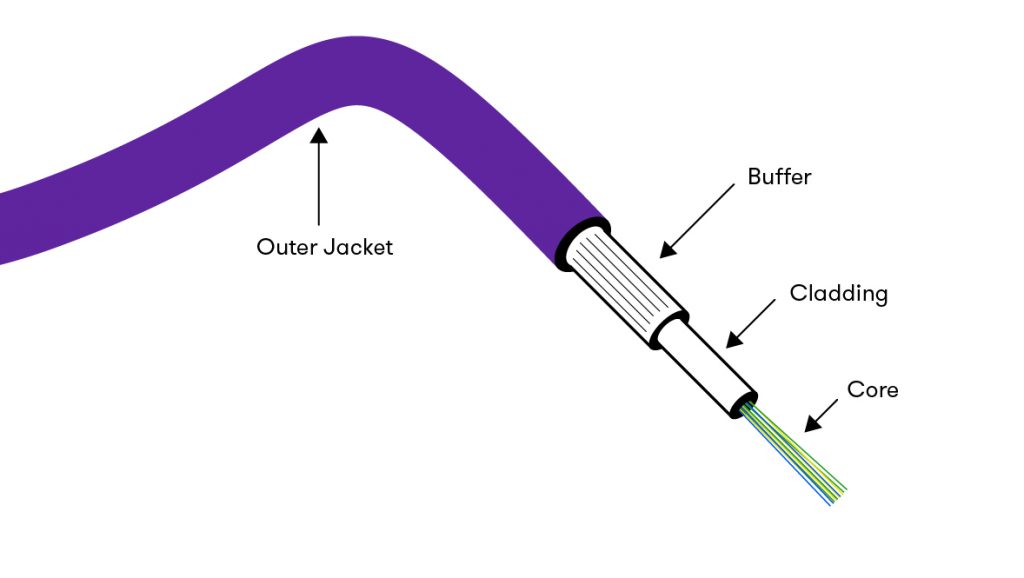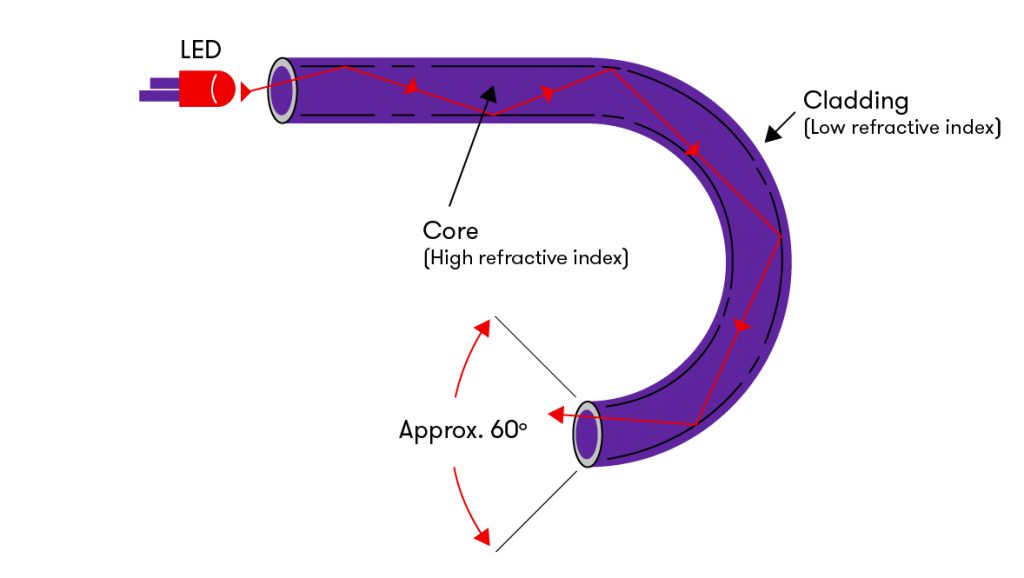In understanding how optical fibers work and how data is sent through optic cables, it is important to note that there are multiple components involved in the construction of an optical fiber. All are required to ensure successful fiber optic installation. The glass strands themselves are absolutely central to the system, but there is also a number of other key parts that play a role in effective data transfer along optical fibers.
Firstly, a source of light is needed to transmit information pulses along the transparent strands of plastic or glass tubing strands at the cable’s core. This is usually created either by a tiny laser or by an LED source, which receives an input signal coming from the optical transmitter circuitry and converts it to a light pulse before bouncing it along the fiber cores.
Secondly, the glass fibers themselves must be surrounded by an additional glass or plastic cladding layer. This will have a different refractive index for light passing through it than the core strands. These refractive differences between the cladding and the glass fibers it surrounds are what allow the incoming light pulses to be bent at particular angles as they travel the length of the cable.
The rays of light remain inside the transparent fiber cable parts as a result of the reflective internal properties. They move along the cable run’s full length, bouncing in a zig-zag pattern to navigate bends. At various points, they might be converted into electrical signals before turning back into light pulses again. Additional components called repeaters are used for this and it is done to maintain high signal strength for longer cable runs.
After travelling at approximately 70% of the speed of light for the majority of the journey, the light signals can eventually be interpreted as communications or data signals once they arrive at their intended destination. Receiving equipment is used to convert them to the desired output.

Optical Fiber Diagram
This handy diagram clearly illustrates the different components that make up a fiber optic cable. The fiber itself is comprised of a core and cladding.
As explained below, these have different refractive indexes to aid the travel of light along the cable. A protective coating, jacket or strength members will then encompass the core and cladding. This is then surrounded by an armoured outer jacket which forms the visible part of the cable. This may be IP-rated for water-blocking purposes.

How Does Fiber Optic Cable Work?
This second optical fiber diagram shows the basic principle of the technology and how it works.
Light enters at one end of the cable and travels through the highly refractive core, bouncing off the cladding which has a low refractive index for this exact reason. Once a beam reaches the end, it is dispersed at an approximately 60° angle and emitted to the target.
 HANSUN
HANSUN 